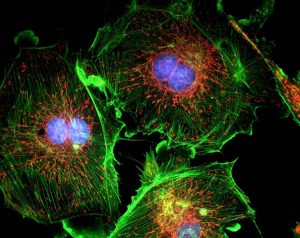

There are two main types of holograms: reflection and transmission. Reflection holograms store the information of a 3D image in a thick photographic emulsion sandwiched between two glass plates and must be viewed with a bright spotlight. Transmission holograms use mirrors and two laser sources, a reference beam and the object beam, to print the hologram on film and can be viewed with the same laser you use to create the image. Each type requires a different projector. Although building a commercial hologram projector is too complex a project to describe in a short article, it is possible to build basic transmission and reflection hologram projectors out of a bright spot light and a laser beam, respectively.
Reflection Hologram Projector
Place a bright spot light at the same distance and angle from the hologram plate as when you first exposed the film. You cannot use fluorescent lights, lasers or light from a frosted bulb to view a reflection hologram projector.
Switch on the spot light and check the quality of your hologram.
Adjust the position of the hologram by moving it from side to side and tilting it until you get the brightest and most focused hologram possible.
Transmission Hologram Projector
Place the laser and the hologram plate in the same location you used to expose the hologram. If you are using a different location, place them at the same distance and angle to each other.
Switch on the laser. The image you see will be the exact copy of the original, what is called a virtual image.
Place the laser head-on from the hologram plate to get a clearer image. The viewing angle with the head-on illuminating will vary slightly, but the quality of the image will improve. This is a good option if you are new to hologram projections.